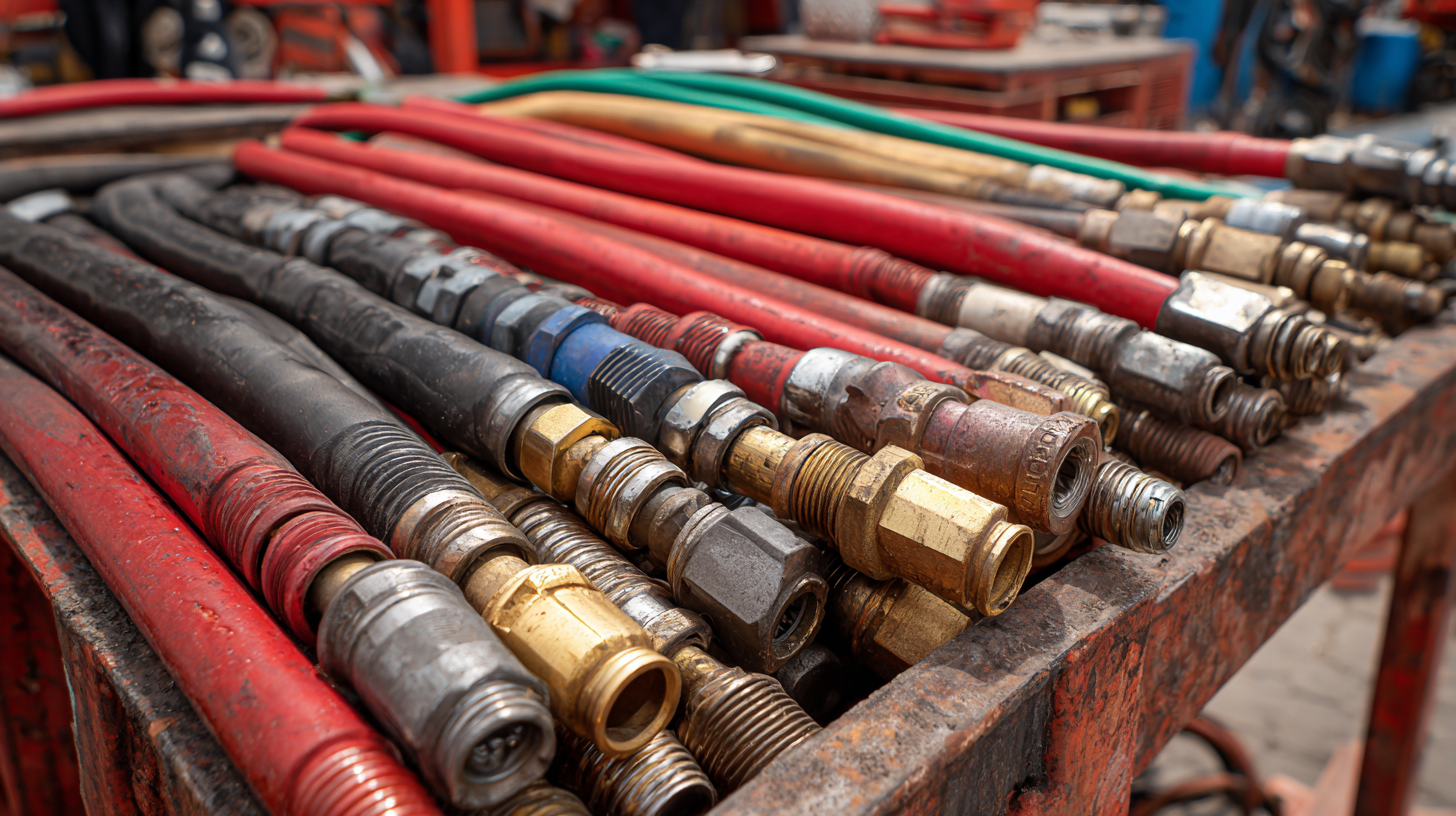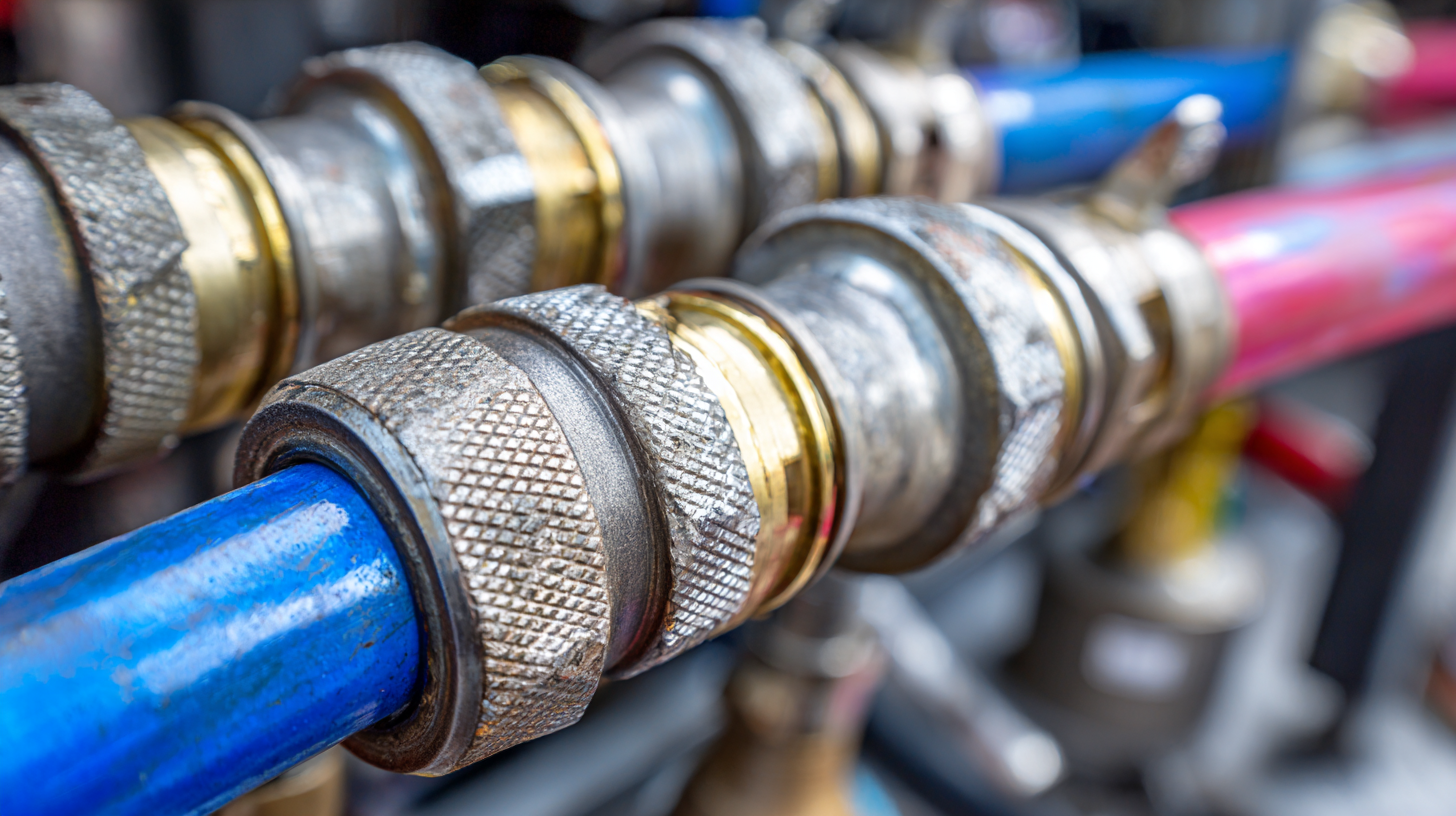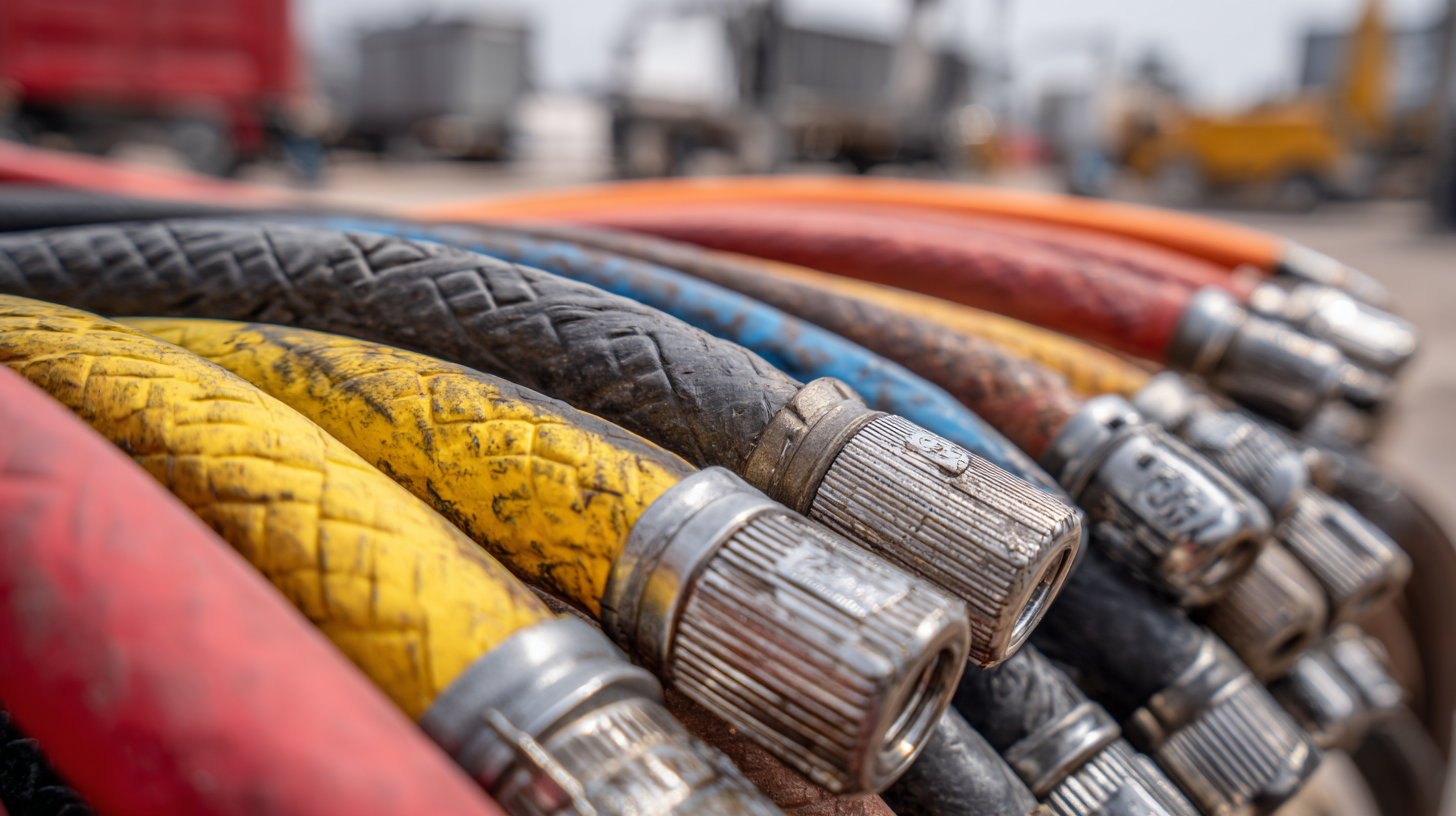Gas hoses are critical components in various industries, facilitating the safe and efficient transfer of gas for applications ranging from cooking to industrial processes. According to a recent report by the National Fire Protection Association (NFPA), improper maintenance of gas delivery systems, including hoses, is a leading cause of hazardous incidents. In fact, nearly 27% of gas-related fires are attributed to equipment failure or neglect. To mitigate such risks and ensure longevity, it's essential to adopt best practices for gas hose maintenance. This comprehensive guide outlines 15 essential tips that not only enhance the lifespan of gas hoses but also contribute to overall safety and performance in gas applications. By adhering to these strategies, users can avoid costly failures and maintain compliance with safety regulations, thereby promoting a secure operational environment.

Regular inspections are crucial for maintaining the integrity and safety of gas hoses. Over time, gas hoses can wear out due to exposure to various elements, including UV rays, weather conditions, and mechanical stresses. Frequent checks help identify potential issues such as cracks, leaks, and weak points. By spotting these problems early, you can prevent hazardous situations that could arise from a compromised hose.
In addition to inspections, implementing proper maintenance tips can significantly extend the lifespan of your gas hoses. Ensure that hoses are stored away from direct sunlight and extreme temperatures to avoid degradation. Periodically check for kinks or bends that can weaken the hose structure. When connecting or disconnecting gas hoses, handle them gently to prevent unnecessary strain. Keeping the fittings clean and lubricated will also contribute to a better seal and overall performance.
Ultimately, by prioritizing regular inspections and adhering to essential maintenance practices, you can enhance the reliability of your gas hoses, ensuring safe and efficient operation for years to come.
| Tip Number | Maintenance Tip | Frequency | Importance |
|---|---|---|---|
| 1 | Inspect for cracks or cuts | Monthly | Prevents gas leaks |
| 2 | Check hose connections | Bi-weekly | Ensures secure fittings |
| 3 | Clean the hose exterior | Monthly | Minimizes wear |
| 4 | Check for kinks | Monthly | Prevents pressure loss |
| 5 | Inspect for chemical exposure | Quarterly | Protects hose material |
| 6 | Replace worn hoses | As needed | Ensures safety |
| 7 | Avoid extreme temperatures | Always | Maintains hose integrity |
| 8 | Store hoses properly | After each use | Prevents damage |
| 9 | Use compatible fittings | Always | Prevents leaks |
| 10 | Monitor pressure gauges | Weekly | Detect issues early |
| 11 | Check for leaks with soapy water | Monthly | Critical for safety |
| 12 | Check for signs of wear on valves | Quarterly | Maintains functionality |
| 13 | Avoid dragging hoses | Always | Prevents abrasions |
| 14 | Use protective covers | Always | Enhances durability |
| 15 | Follow manufacturer guidelines | Always | Ensures compliance and safety |
 Proper storage of gas hoses is crucial for ensuring their longevity and performance. One of the best practices is to always coil the hoses loosely when storing them. Tight coils can lead to kinks and damage over time, which may compromise their integrity. Utilize a hose reel or a designated storage container to keep them organized and off the ground, protecting them from physical wear and environmental factors.
Proper storage of gas hoses is crucial for ensuring their longevity and performance. One of the best practices is to always coil the hoses loosely when storing them. Tight coils can lead to kinks and damage over time, which may compromise their integrity. Utilize a hose reel or a designated storage container to keep them organized and off the ground, protecting them from physical wear and environmental factors.
Also, it’s vital to store gas hoses in a cool, dry place away from direct sunlight. UV rays can degrade the materials, reducing the hose's lifespan. Additionally, inspect the hoses periodically for any signs of wear or damage before storage. This proactive approach helps catch potential problems early and prevents mishaps later.
Lastly, always ensure that hoses are disconnected from gas sources before storing them. Remaining pressured can lead to leaks or other dangerous conditions. By adopting these tips, you can significantly enhance the durability and safety of your gas hoses, ensuring they remain in top condition for all your needs.
When it comes to gas hose maintenance, recognizing the signs of wear and tear is crucial for ensuring safety and performance. Industry reports indicate that nearly 20% of gas-related incidents stem from faulty hoses, highlighting the importance of regular inspections. Common indicators that it may be time to replace your gas hose include visible cracks, brittleness, or discoloration. According to a study by the National Fire Protection Association (NFPA), hoses that show any signs of deterioration pose a risk of leaks, which can lead to fires or explosions.
Additionally, it's essential to monitor the flexibility of your gas hose. Over time, prolonged exposure to heat and pressure can cause hoses to become rigid, reducing their effectiveness in providing a secure connection. The Gas Technology Institute suggests replacing hoses every 2-5 years, even if no obvious wear is visible, as materials can degrade internally, leading to unexpected failures. Regular maintenance practices such as checking for leaks using soapy water can also prolong the life of your gas hose, ensuring reliable and safe performance throughout its usage.
Regular cleaning of gas hoses is crucial for maintaining their performance and extending their lifespan. According to a report from the Gas Technology Institute, improper maintenance can lead to a reduction in hose efficiency by up to 30%. By implementing thorough cleaning techniques, users can significantly enhance the operational reliability of their gas hoses.
To ensure optimal cleaning, it's essential to use appropriate solvents that are compatible with the hose material. Many experts recommend using a mixture of warm water and mild detergent to remove dirt and grease build-up. Avoiding harsh chemicals is key, as they can deteriorate the hose material, leading to leaks and potential hazards. Additionally, routine inspections should be performed after cleaning to detect any signs of wear or degradation. According to the National Fire Protection Association, regular inspections can reduce the chances of hose failure by 50%, thus promoting safer operations in various applications.
Incorporating these cleaning techniques into your maintenance routine not only helps to preserve the integrity of gas hoses but also contributes to overall safety in gas handling processes. Studies indicate that proper maintenance can increase equipment longevity by up to 40%, underscoring the importance of these essential practices.

Proper safety precautions are critical during gas hose maintenance activities to prevent accidents and ensure a safe working environment. According to the National Fire Protection Association (NFPA), gas-related incidents account for approximately 15% of all residential fires, underscoring the importance of strict adherence to safety guidelines. Before commencing any maintenance, technicians should wear appropriate personal protective equipment (PPE), including flame-resistant clothing, gloves, and safety goggles, to minimize exposure to hazardous materials.
It's also essential to inspect the work area for potential hazards. Ensure that the space is well-ventilated to prevent gas accumulation, as even a small leak can lead to significant risks. The American Society of Mechanical Engineers (ASME) recommends conducting a thorough risk assessment, including checking for signs of wear or damage in the hoses themselves. A study by the Gas Safety Authority indicates that regular visual inspections and pressure tests can reduce the likelihood of leaks by up to 30%, highlighting how proactive measures and safety checks contribute to overall safety during gas hose maintenance.
This chart represents the importance level (on a scale of 1 to 10) of various maintenance tips for ensuring long-lasting performance of gas hoses. Each tip is crucial for safety and efficiency during gas hose maintenance activities.